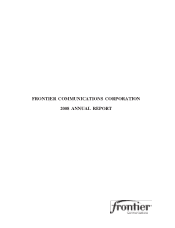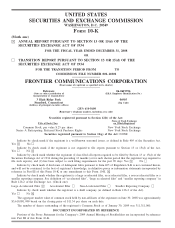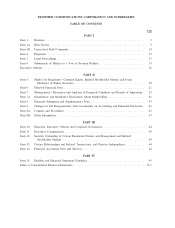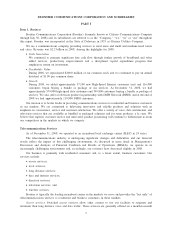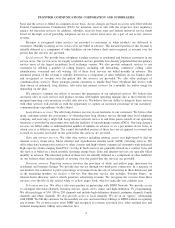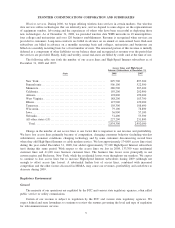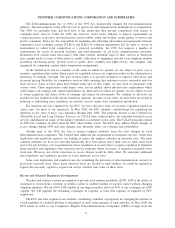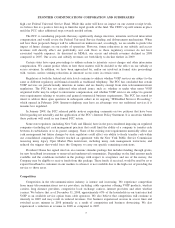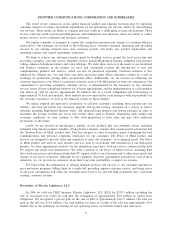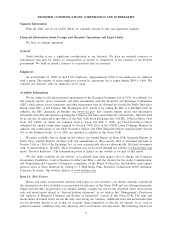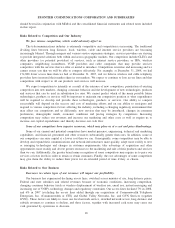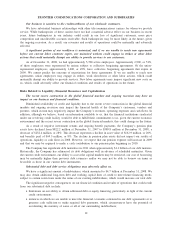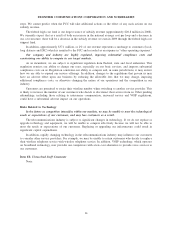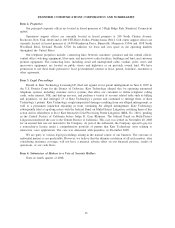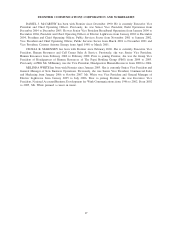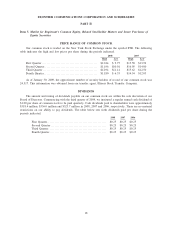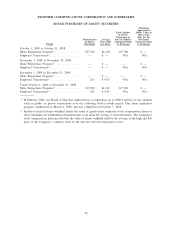Frontier Communications 2008 Annual Report Download - page 11
Download and view the complete annual report
Please find page 11 of the 2008 Frontier Communications annual report below. You can navigate through the pages in the report by either clicking on the pages listed below, or by using the keyword search tool below to find specific information within the annual report.should be read in conjunction with MD&A and the consolidated financial statements and related notes included
in this report.
Risks Related to Competition and Our Industry
We face intense competition, which could adversely affect us.
The telecommunications industry is extremely competitive and competition is increasing. The traditional
dividing lines between long distance, local, wireless, cable and internet service providers are becoming
increasingly blurred. Through mergers and various service expansion strategies, services providers are striving
to provide integrated solutions both within and across geographic markets. Our competitors include CLECs and
other providers (or potential providers) of services, such as internet service providers, or ISPs, wireless
companies, neighboring incumbents, VOIP providers and cable companies that may provide services
competitive with the services that we offer or intend to introduce. Competition is intense and increasing and we
cannot assure you that we will be able to compete effectively. For example, at December 31, 2008, we had
174,800 fewer access lines than we had at December 31, 2007, and we believe wireless and cable telephony
providers have increased their market share in our markets. We expect to continue to lose access lines and that
competition with respect to all our products and services will increase.
We expect competition to intensify as a result of the entrance of new competitors, penetration of existing
competitors into new markets, changing consumer behavior and the development of new technologies, products
and services that can be used in substitution for ours. We cannot predict which of the many possible future
technologies, products or services will be important to maintain our competitive position or what expenditures
will be required to develop and provide these technologies, products or services. Our ability to compete
successfully will depend on the success and cost of marketing efforts and on our ability to anticipate and
respond to various competitive factors affecting the industry, including a changing regulatory environment that
may affect our competitors and us differently, new services that may be introduced, changes in consumer
preferences, demographic trends, economic conditions and pricing strategies by competitors. Increasing
competition may reduce our revenues and increase our marketing and other costs as well as require us to
increase our capital expenditures and thereby decrease our cash flow.
Some of our competitors have superior resources, which may place us at a cost and price disadvantage.
Some of our current and potential competitors have market presence, engineering, technical and marketing
capabilities, and financial, personnel and other resources substantially greater than ours. In addition, some of
our competitors can raise capital at a lower cost than we can. Consequently, some competitors may be able to
develop and expand their communications and network infrastructures more quickly, adapt more swiftly to new
or emerging technologies and changes in customer requirements, take advantage of acquisition and other
opportunities more readily and devote greater resources to the marketing and sale of their products and services
than we can. Additionally, the greater brand name recognition of some competitors may require us to price our
services at lower levels in order to retain or obtain customers. Finally, the cost advantages of some competitors
may give them the ability to reduce their prices for an extended period of time if they so choose.
Risks Related to Our Business
Decreases in certain types of our revenues will impact our profitability.
Our business has experienced declining access lines, switched access minutes of use, long distance prices,
Federal and state subsidies and related revenues because of economic conditions, increasing competition,
changing consumer behavior (such as wireless displacement of wireline use, email use, instant messaging and
increasing use of VOIP), technology changes and regulatory constraints. Our access lines declined 7% in 2008,
and 6% in 2007 (excluding the access lines added through our acquisitions of Commonwealth Telephone
Enterprises, Inc. (Commonwealth or CTE) and Global Valley Networks, Inc. and GVN Services (together
GVN)). These factors are likely to cause our local network service, switched network access, long distance and
subsidy revenues to continue to decline, and these factors, together with increased cash taxes may cause our
cash generated by operations to decrease.
10
FRONTIER COMMUNICATIONS CORPORATION AND SUBSIDIARIES

